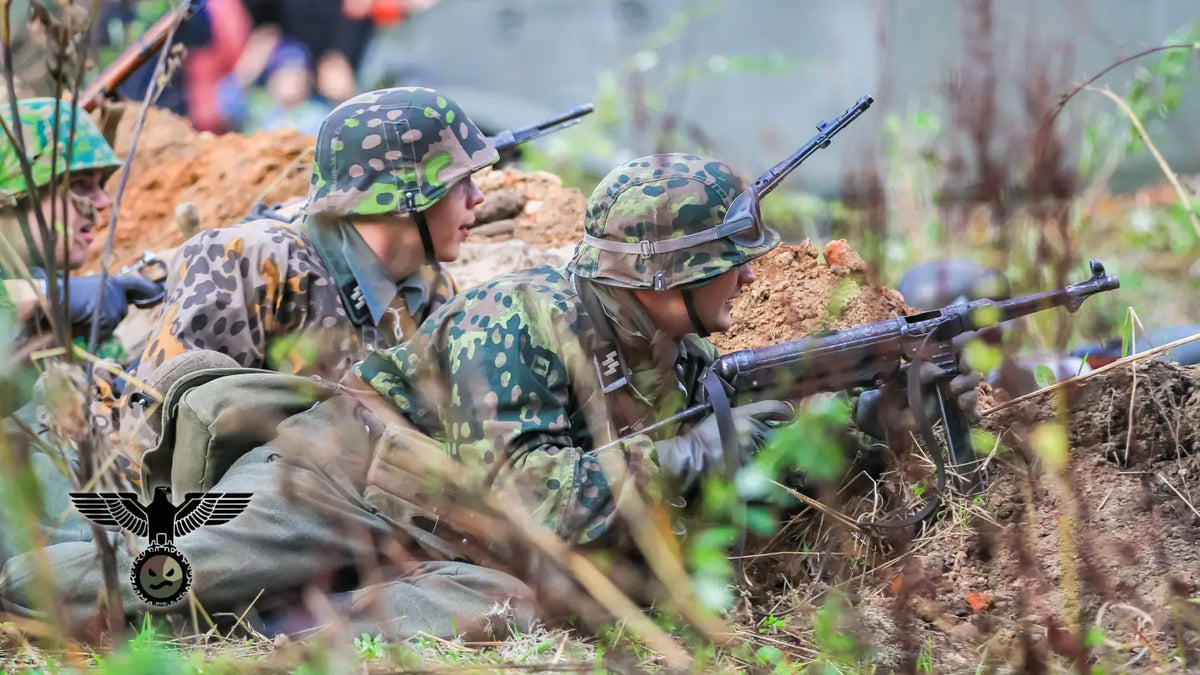German World War 2 (WWII) Camouflage

During World War II, the German military utilized various types of camouflage patterns for their uniforms, equipment, and vehicles. The specific camouflage patterns evolved throughout the war based on the environment and the changing needs of the German armed forces. Here are some notable German World War II camouflage patterns:
Splittermuster (Splinter Pattern): One of the most iconic and widely used camouflage patterns. Characterized by irregular shapes resembling splinters or shards. Initially used on Zeltbahn (shelter quarter) and later on uniform items.
Sumpfmuster (Marsh Pattern): Introduced for use in swampy and marshy environments. Featured a mix of green and brown irregular shapes on a light background.
Erbsenmuster (Pea Dot Pattern): Introduced in 1944, towards the end of the war. Small, pea-sized dots in various colors, such as brown and green, on a light background.
Oak Leaf Pattern (Eichenlaubmuster): Used on various uniform pieces and helmet covers. Characterized by oak leaf and acorn shapes.
Plane Tree Pattern (Platanenmuster): Introduced in 1942 for use in warmer climates. Featured large irregular shapes with a mix of brown and green.
Rauchtarnmuster (Smoke Pattern): Designed for use on smocks and overtrousers. Consisted of a mix of dark and light colors to simulate smoke.
Leibermuster (Leibermuster): Developed but never widely issued. Featured a complex pattern of small geometric shapes in various colors. It's important to note that the effectiveness of camouflage patterns varied, and not all soldiers were equipped with camouflaged uniforms or equipment. Additionally, as the war progressed and resources became scarce, there were instances where soldiers had mismatched or non-standardized camouflage patterns.
These patterns were used across various branches of the German military, including the Heer (Army), Luftwaffe (Air Force), and Waffen-SS. The development and use of camouflage were influenced by factors such as the theater of operations, seasons, and the overall strategy of the German military.